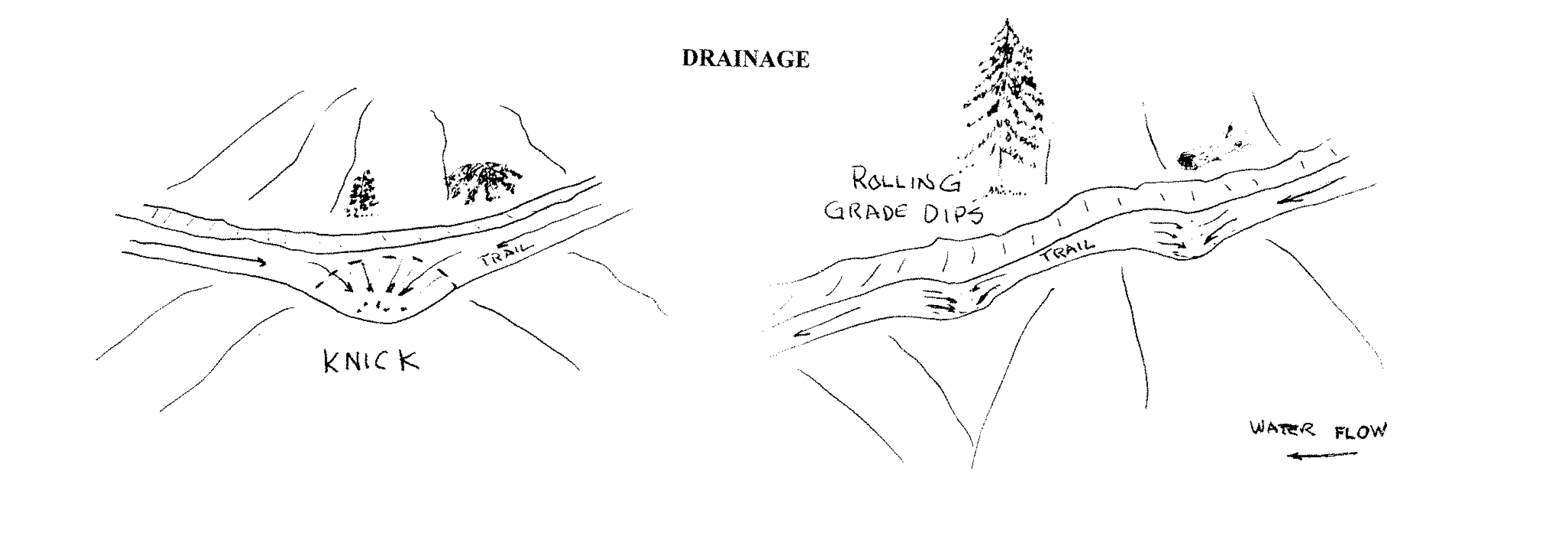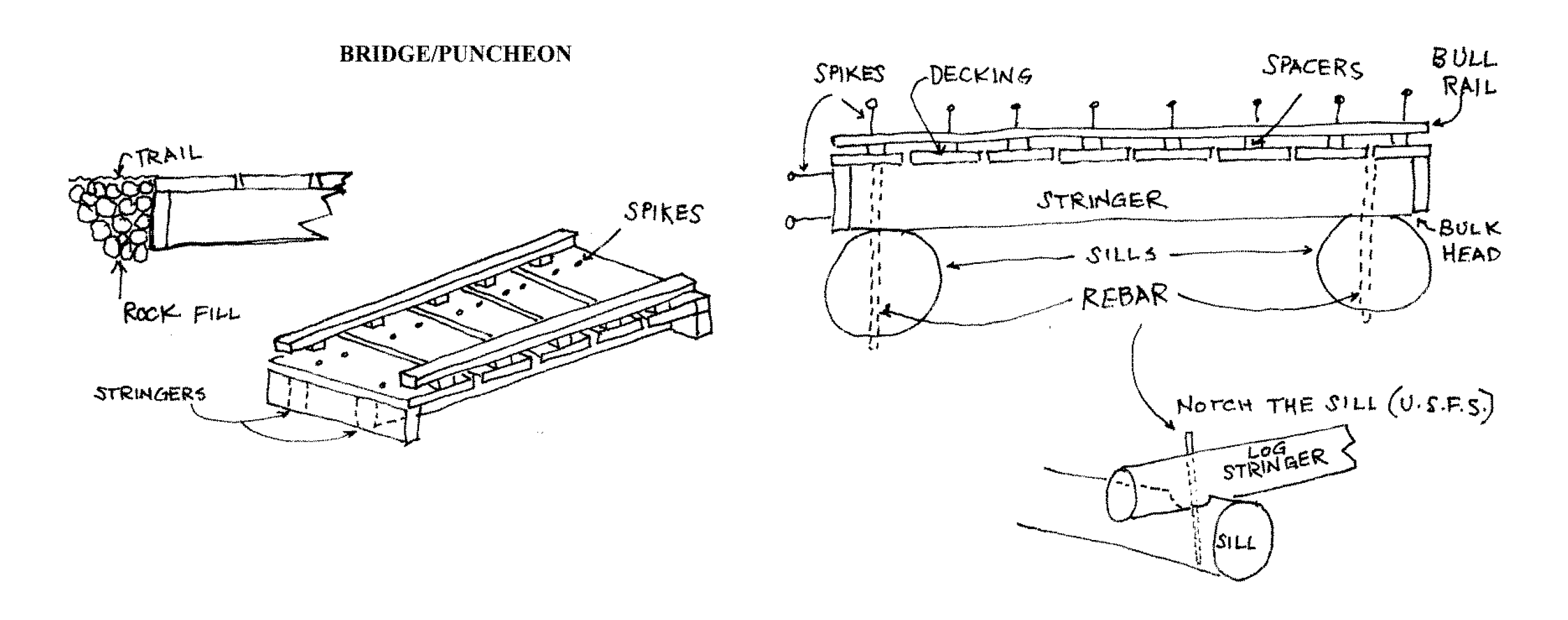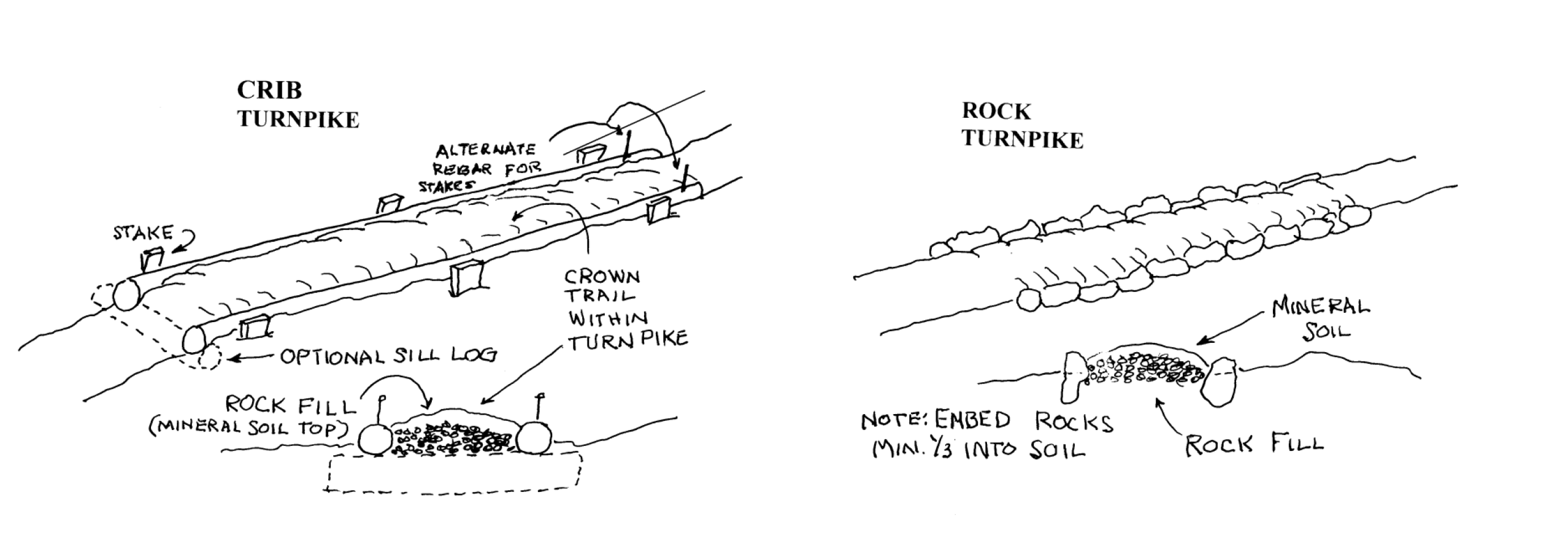How WTA builds trails for climate resiliency
WTA does work each year to build trails that hold up to the challenges of climate change. Here's what we keep in mind when we do.
WTA does work each year to build trails that hold up to the challenges of climate change. Here's what we keep in mind when we do.
- Soil assessment: Identify routes with minimal impact on sensitive soils. Prioritize good drainage and aggregate to ensure long-term stability.

Depending on the terrain, there are different drainage solutions, which WTA takes into consideration. Pete Dewell created these image for his book "Tread and Retread: A Short Manual for Trail Building and Maintenance." Pete was a vital part of WTA's trail work community for decades.
- Mind the grade: Maintain trail grades (slope steepness) to 10% or less to prevent erosion. As a trail becomes increasingly steep, it becomes less resilient and prone to erosion.
- Winding route: Trails that contour are key, they should be no more that ½ the grade (if not ⅓ ) of the side slope. Another tactic when possible, route trails through dense and resistant vegetation to avoid widening or creating informal trails.

Puncheons and bridges are one way to keep hikers on trail and prevent hikers from creating social routes. Diagram drawn by assistant crew leader Pete Dewell.
- Hydrology assessment: Analyze current hydrology and future shifts due to climate change. As long time regular WTA trail crew volunteer Pete Dewell would say, “ask yourself, what would water do?”
- Tread slope: The trail’s surface (tread) should be sloped away from the hillside by 5% on the outer edge of the trail (outslope) and include grade reversals to reduce water from collecting on the trail and flowing down the trail.
- Sustainable construction: Drainage, ditches and use of advanced design features (such as turnpikes) can help direct water away from the trail, reduce erosion and runoff into streams. Additionally, structures like turnpikes are effective for keeping people on the trail when tempted to go off trail to avoid mud or standing water.

Turnpikes are one type of structure that help prevent erosion by directing water away from trails. Diagram drawn by assistant crew leader Pete Dewell.
- Species assessment: Trails are routed to minimize impacts on wildlife, by avoiding nesting areas, for instance. We also consider how species could shift as the climate changes.
This piece originally appeared in an article in the Spring 2025 issue of Washington Trails Magazine. Support trails as a member of WTA to get your one-year subscription to the magazine.

